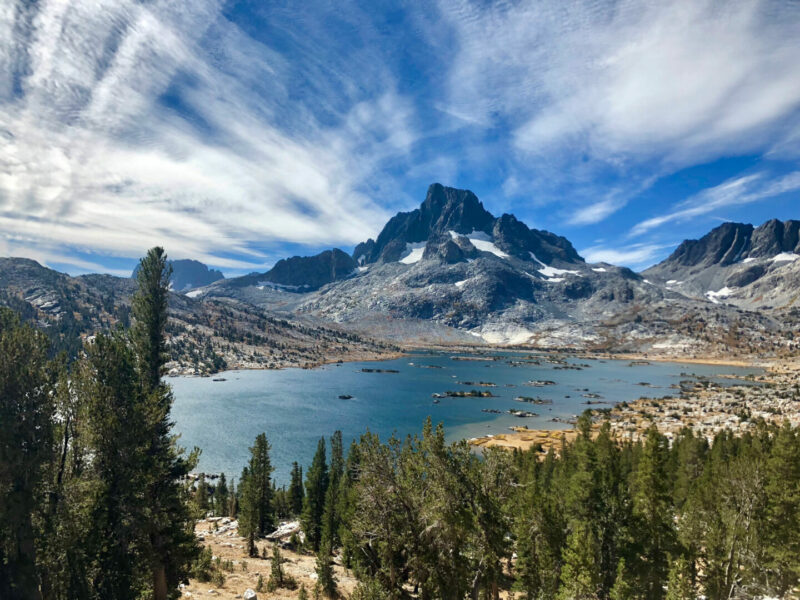Table of Contents Show
Inyo National Forest is a destination where RVers prefer not to waste time. We want to help you make the most out of your trip.
The forest has many hiking trails, high peaks, and amazing views. A trip through Inyo might make it into your memory books. Keep reading to learn some of our favorite things to do and where to camp.
Where Is Inyo National Forest?
You’ll find Inyo National Forest in northern California on the eastern slope of the Sierra Nevada. It comprises about 2 million acres and 165 miles. Mt. Whitney is the highest peak in the forest and the contiguous United States at 14,494 ft.
The national forest has a vast ecosystem and is a habitat for fish and wildlife. Visitors come for recreation and nature. Many people enjoy camping, hiking, fishing, off-roading, horseback riding, and skiing. The forest also provides timber and minerals and serves as a watershed.
Best Time of Year to Visit Inyo National Forest
Accessible year-round, Inyo National Forest has plenty to see and do at any time. Visit in the spring, summer, and fall for warm weather. You can camp, hike, fish, and go on scenic drives. Most points of interest open in late spring and close in the fall.
Visit in January through March for winter sports adventurers. The forest has an abundance of opportunities for snowshoeing, snowmobiling, snowboarding, and skiing. Mammoth Mountain, a large and popular ski resort in the area, has 150 trails. Additionally, it has 100 miles of groomed trails for snowmobiling.
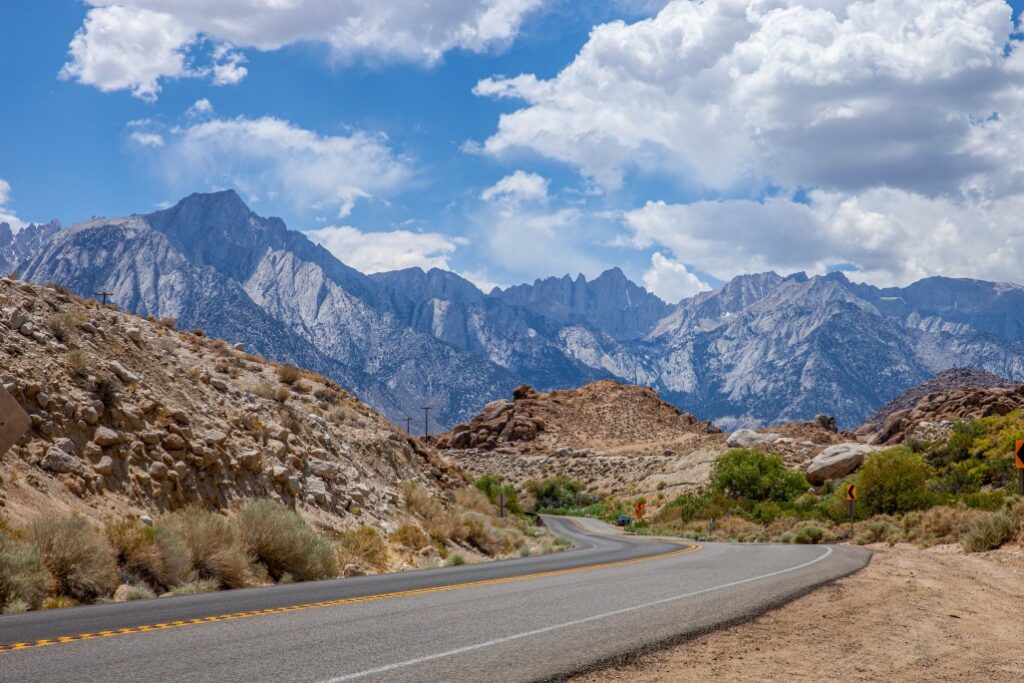
Things to Do in Inyo National Forest
Inyo National Forest provides endless activities for any age or skill level. Whether you have a week or only a couple of days in the national forest, you can easily fill up every minute and still not see it all. Here are five highlights that we recommend checking off your list.
Devil’s Postpile National Monument
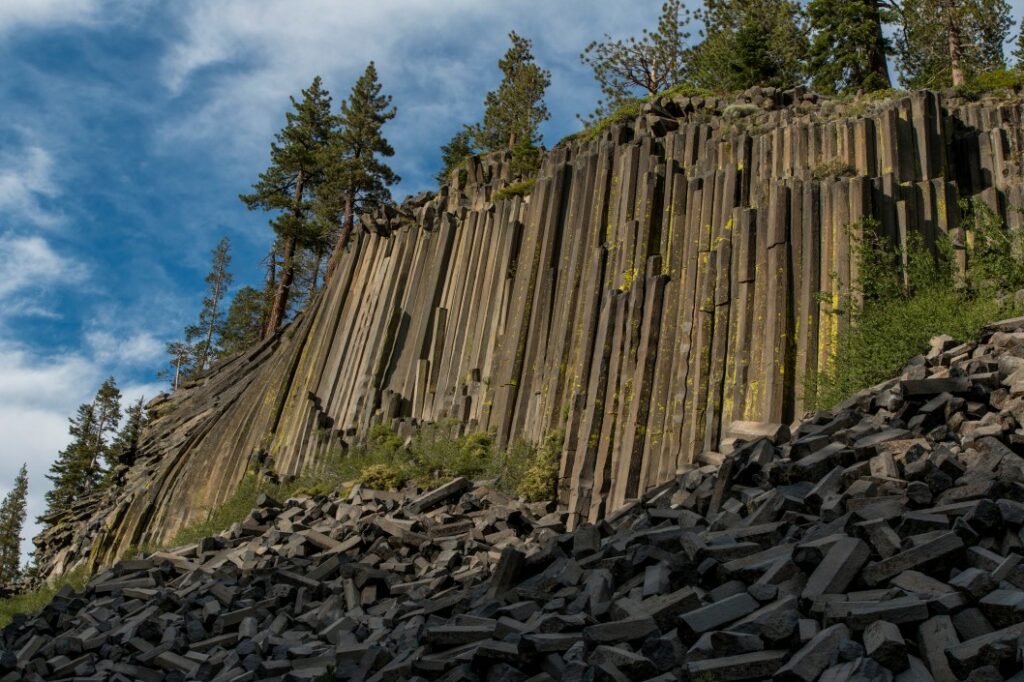
Devil’s Postpile is a geological wonder and national monument. It is a rock formation of symmetric basalt columns that rise 60 ft high. They formed around 100,000 years ago from a cooling lava flow that cracked into multi-sided columns.
The Devil’s Postpile National Monument also protects Rainbow Falls. The 101-ft high falls are the highest on the Middle Fork of the San Joaquin River. It’s a beautiful site and well worth checking out when you visit.
You can enter the national monument via a shuttle bus near the Mammoth Mountain Adventure Center. The bus stops at Devil’s Postpile and Rainbow Falls. The area has about 8 miles of trails. A 0.8-mile trail takes you to the base of Devil’s Postpile. You can go on a 2.5-mile walk to Rainbow Falls from the ranger station. The monument is open from mid-June to mid-October.
Pro Tip: If Devil’s Postpile piques your interest, check out our list of ten national monuments everyone should visit.
Long Valley Caldera
Long Valley Caldera is a result of an eruption about 760,000 years ago. The last eruptions happened around 500 to 800 years ago, producing Bishop Tuff, a pink rock that you can see from US 395 on the Sherwin Grade. Mammoth Lakes surround the massive, depressed area to the west, Crowley Lake to the southeast, and the Glass Mountains to the north. You can hike, bike, and climb in the area.
Convict Lake
Convict Lake is southeast of Mammoth Mountain. This beautiful lake has turquoise water and lies at an elevation of approximately 7,600 ft. Many enjoy this spot for fishing and hiking.
One of the best hikes is a 3-mile loop trail that takes you along the shoreline. You can also go backcountry hiking from the lake. If you like to fish, you’ll likely catch trout.
Mount Whitney
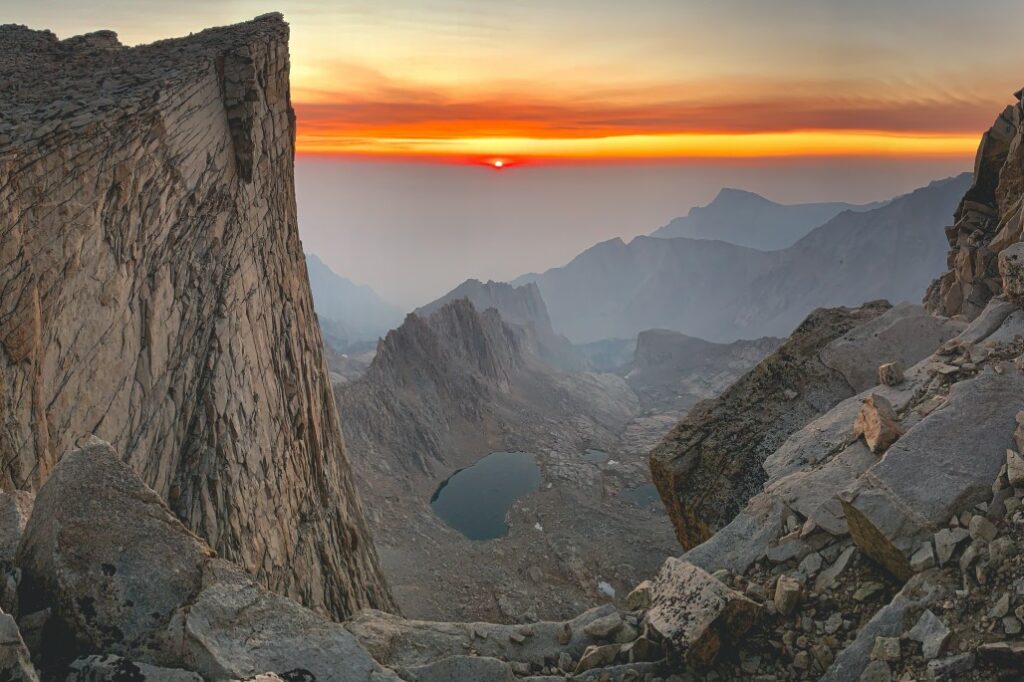
Mt. Whitney is the highest peak in the contiguous United States. It lies on the border of Inyo National Forest and Sequoia National Park. When you visit, you’ll have the opportunity to see it in all its 14,494 ft of glory. The best place to see Mt. Whitney is from the Interagency Visitor Center on Highway 395, south of the town of Lone Pine.
You’ll have plentiful trails, rock climbing, and more. It’s the most frequently climbed peak in the Sierra Nevada. Therefore you will need to obtain a permit before venturing up.
John Muir Trail
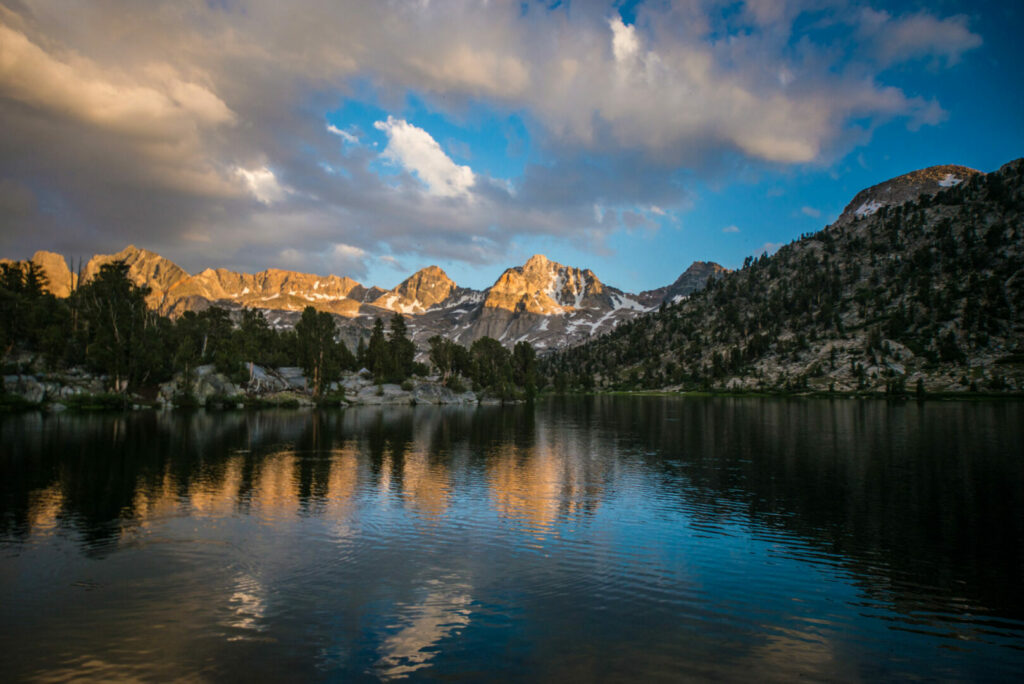
The John Muir Trail is part of the Pacific Crest Trail. You’ll see canyons, cliffs, peaks, forests, wildlife, and more when hiking this trail. It runs 211 miles long from Yosemite Valley to Mt. Whitney.
While backcountry hiking is one of the most popular ways to experience the path, it has a day hike section. In addition, you can reference trail guide books that can help you figure out where to go and which trailheads have transportation.
Where to Camp in Inyo National Forest
As you’re likely figuring out, Inyo National Forest is worth taking your time in to enjoy the natural wonders. Instead of simply driving through, we recommend staying for a while. Here are three campgrounds that will put you in the center of the action.
Sherwin Creek
Sherwin Creek Campground is about 2 miles from Mammoth Lakes, California. The campsites do not have hookups. However, it has vault toilets, a water spigot, food lockers, and picnic tables in the campground.
Upper Pines
Upper Pines Campground is in Yosemite National Park and about 100 miles from Mammoth Lakes. Campsites have no hookups but do have a picnic table, a fire ring, and a food storage locker on each site. The campground has vault toilets, drinking water, and allows pets. In addition, the Yosemite free shuttle bus stops near the campground entrance.
June Lake
June Lake Campground is in the town of June Lake in the Inyo National Forest. You won’t have any hookups. However, the campground has drinking water, flush toilets, and food lockers. Additionally, you have easy access to many nearby marinas.
Keep in Mind: Inyo National Forest also some of the best free camping in California.
Don’t Waste Your Time, Try It All
The moral of the story is, don’t waste your time in Inyo National Forest. Make the most out of this destination and natural wonderland. We highly recommend staying in the area for a weekend or more to discover all that it has to offer.
We hope you’ll share your experience with us if you visit! Tag us in some photos and let us know what your favorite activities are.




